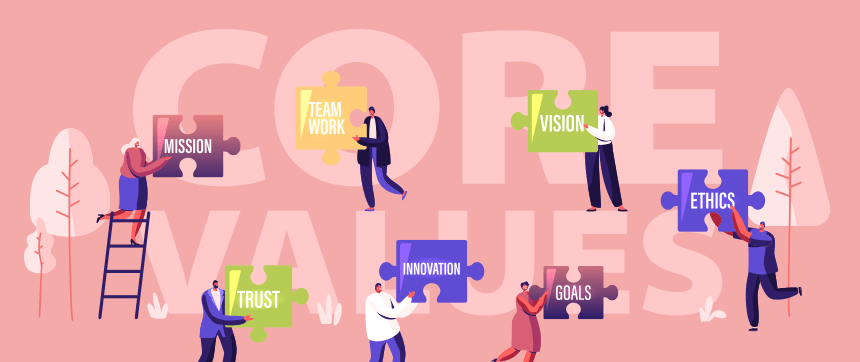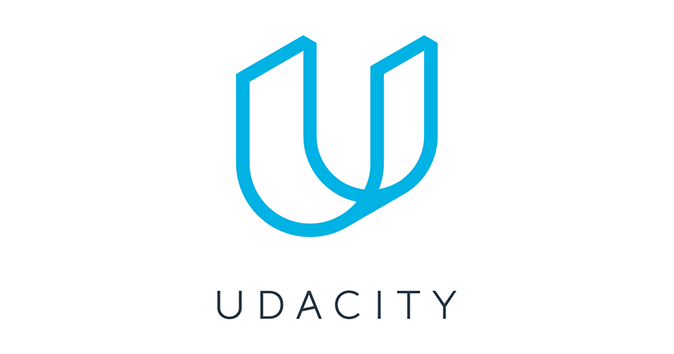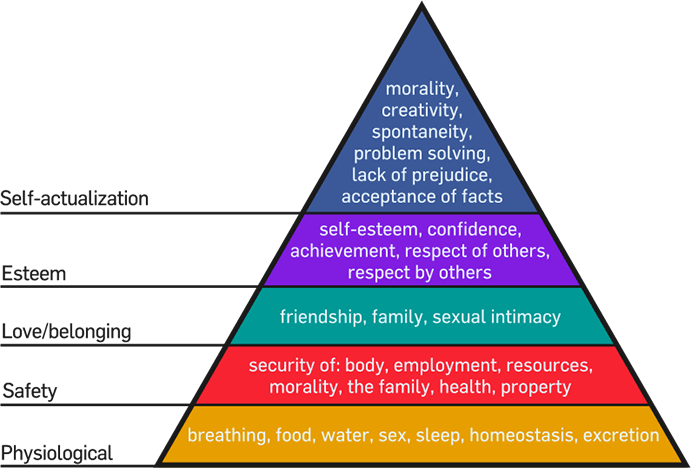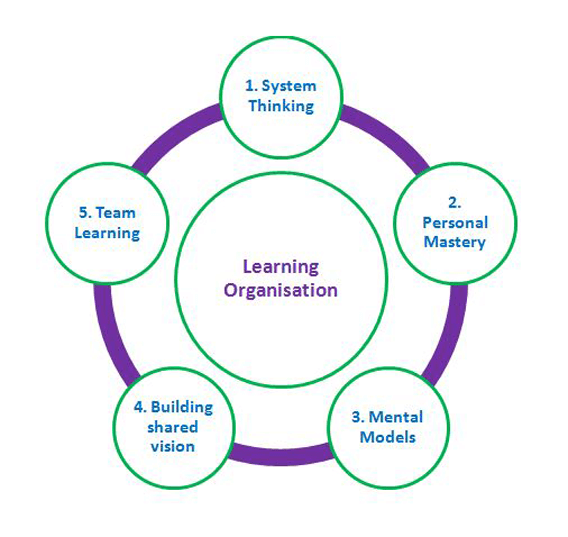Guests wait up to three months for an available table at Canlis Restaurant in Seattle. Their four-course meal is served at tables that sit alongside floor-to-ceiling windows overlooking Lake Union and the Cascade Mountain Range.
On any given night, the parking valet welcomes two hundred guests to dine. Without fail, he remembers each and every one of their names, and identifies them to their car, entirely from memory.
How does that stack up to your ability to remember names?
More significantly, how does this employee’s dedication stack up to the rest of today’s workforce?
“I am absolutely done with my current job….I have ZERO motivation to do anything. I seriously spend most of my days online shopping, reading blogs, reading the news, etc. I do the bare minimum to get by without someone actually noticing I’m not working like 50% of the time….I ignore my entire email inbox until 4:30 and then frantically respond to everything before I leave for the day,” writes a reader to the popular advice column, Ask a Boss.
According to a Gallup poll, this reader represents the norm. Almost 70% of the workforce in the US admits to sleepwalking through their work days, and 14% are actively disengaged.
How to account for the disparity between a parking valet with a passion for his company, and an idle, unmotivated average? Mark Canlis, owner of Canlis fine dining, offers an explanation:
“What if we could serve our guests by serving our staff? What about that as a business model? …To the degree that you as a boss won’t learn vulnerably in front of your staff, they will not respect you. Your employees know that you don’t know it all. And they want to see the times when you don’t know it. And there is great strength in that sort of vulnerability.”

What characterizes this transparent leadership Canlis has made part of its company culture?
It’s a style of leading that seeks to create openness within an organization through remaining vulnerable, acknowledging blunders, listening, disclosing information and serving employees.
Transparent leaders have clear core values that they personify in their professional role, and disseminate throughout the company.
It’s a style of leadership that engages personally with employees, and empowers them to develop their potential.
Let’s look more closely at these facets of transparent leadership, to understand how a company creates a work environment where a parking valet is committed to memorizing more names in a single evening than there are countries in the world.

Part I: Essential Qualities of a Transparent Leader
“As a leader you always want to know the answers to all the questions. You always want to be in a position to tell people, ‘Well this is what is going to happen, this is where we are going’,” says Igor Epshteyn, CEO at Coherent Solutions, a software company in Minneapolis.
Leaders readily acknowledge that behaving with transparency requires a conscious effort. It goes against established ideas that a leader is indisputable.
However, habitually behaving with openness and candor is well worth the effort. It generates a loyal and innovative team.
Here are eight ways that leaders cultivate a transparent environment in the workplace.
1. Acknowledge Vulnerabilities
With the outbreak of the 2020 pandemic, it felt disarming for Epshteyn to communicate to his company that so much was out of his hands. However, he found that acknowledging his vulnerabilities, while emphasizing that he was doing everything he could, increased loyalty from his base.
“We didn’t know the answers to a lot of questions. When people working with you understand that you’re doing the best that you can, they pay back with loyalty, and it becomes one big loyal team, with clients and employees.”
Even when we’re not faced with a world-wide pandemic, every leader knows well that there’s much he cannot control.
A transparent leader isn’t hesitant to acknowledge this. “One of the things we always say around here is that there’s very little we can do to affect the number of people that come in through the front door….we need to realize that we’re called to do our best and then trust God for the rest,” says Canlis.
Similarly, Nolan Farris, Chief Sales Officer of the employment website Indeed, was faced head-on with concerns from employees as the company strove to scale in size.
When they approached him to ask if they’d succeed in their efforts, he said: “If we focus on what we can control, and we maximize our productivity, all of these things will come.”
A team appreciates a leader who is honest about her limitations, but who still works as hard as she can. As Epshteyn says, they pay back with loyalty.
2. Disclose Whatever You Can
Have you ever had someone keep a secret from you, just so they could lord it over you that they knew something and you didn’t? The corporate equivalent is a boss hidden in a corner office behind a sound-proof door, discussing big, important matters with a few select individuals.
Transparent leaders don’t hold onto information as a means of maintaining their authority. Granted, there are certain things a boss will know that employees do not, or know before others, and plenty of personal employee information that’s hopefully always undisclosed.
However, transparent leaders share information as far as they can.
“Sometimes leaders have information that they can’t share. Communicating in transparency means you just have to say that. There’s been many times where I’ve had people ask me very pointed, specific questions in regards to something that I definitely know about, and the response has to be, ‘Well the truth is, I can’t tell you,’” says leadership coach and team builder Lorenzo Flores.
This type of candor communicates that the leader doesn’t need to reign above the rest of the team.
When a leader releases this need to be the “holder of all the big secrets”, it allows their other qualities to come to the forefront, such as charisma, enthusiasm, and team building skills. These are the qualities people value and appreciate in a leader in the first place.

3. Overcommunicate
Have you ever forgotten to tell someone something really important simply because you got busy and it slipped your mind?
In a company with multiple departments, it is very easy for significant developments to take place in one department that aren’t ever told to another.
However, for company cohesion, it’s necessary for important decisions and breakthroughs to be communicated throughout the company. This makes everyone feel like they’re in on the play, and not benched on the sidelines.
Oftentimes, failures to communicate occur due to poor or non-existent systems. Quarterly meetings, combined with weekly emails (that are required reading) is one way to maintain fluid communication.
Epshteyn says that within his business, it’s important to communicate from the top down, but also across different departments. When people make a decision in one department, others need to know about it as well.
4. Eat Some Crow
Employees want to see a united front with the leaders in their organization. It creates cohesion and stability within the core.
However, when a boss or manager gets away with making a mistake or relaying inaccurate information, it communicates to everyone that seniority and status matter more than honesty.
Even if it entails stepping on someone’s toe or having a little mud thrown in her face, a transparent leader calls out blunders and errors—and the little things count just as much as the big things!
“The truth is the truth. You debate opinions, you don’t debate facts. From a transparent standpoint, I have no problem calling out if someone else is right or wrong, because you know what? I will own it myself if I am wrong,” says Flores.
Employees appreciate an environment where everyone, regardless of title or position, gets called out on the carpet from time to time. When mistakes are pushed under the rug, it festers and creates resentment.
Acknowledging blunders also demonstrates the humanness of the leader. This kind of transparency makes a leader more relatable.
“Employees are impressed by a leader when they see somebody growing in front of them,” Canlis observes.

5. Let Down the Mask
“This current generation sniffs things out faster than you could possibly imagine–they don’t want to be pitched, they don’t want to be angled. They just want authenticity out of a person, and that’s pretty old fashioned,” says Canlis.
In this social media age, it’s easy to carefully curate our lives and paint an idyllic picture of who we are and what our lives consist of. Everyone sees smiling faces and beautiful vacations, but never the messy kitchen, dirty laundry, or children in the middle of a meltdown.
Any veteran of social media is fatigued with this facade, and wants to know the person behind the artifice.
Farris celebrates that his company has been “in on” his personal life. “These people want to rally behind someone who is relatable…it’s been fun to build a business at the same time that we’re growing our family. I mean, my employees have seen my family grow.”
A transparent leader understands the value of letting employees glimpse behind the curtain to see the “real” you. As Farris says, people want a leader they identify with.
6. Flaunt Faults
“One of my top-tier superpowers is knowing what I suck at….no one can be great at everything,” says Ty James Largo, owner of Aw Collective.
A transparent leader has enough self-knowledge to understand the areas where he needs to improve, or skills he simply will never have. –And enough confidence to admit this to others as well.
Epshteyn readily acknowledges he’s no Tony Robbins when standing in front of his company. He’d much prefer to send emails and communicate in small groups.
“I don’t consider myself to be a very good communicator…..more and more I’ve been pushed by my team to communicate more. It’s been evolution and growth; it’s not something I have in me naturally….people, when they see that you are sincere, open and honest, they forget little details. They don’t pay attention to the nuances of what you said.”
A team appreciates seeing a leader’s flaws and understanding they’re not perfect. This, too, makes a leader more relatable.

7. Do the Little Things
It’s so common for someone to ignore an email, or say they’ll get back to us, and then forget. And plenty of people are so busy they can’t ever seem to show up on time for anything.
Even with the tiny details, transparent leaders behave conscientiously, and keep their word.
Responding to emails, being punctual, and following up on things they say they’ll do communicates that the leader values each and every person, and has time for them. It’s so true that the little things matter just as much as the big things.
It communicates respect—and respect is never a one way street. The leader, in turn, is esteemed and regarded by the team.
8. Poo-Poo Position and Title
“I don’t think of myself as a leader. It’s like we’re a big collective and we’re doing this all together.”
Eileen Fisher, owner of the eponymous women’s clothing company, has achieved great success, but with remarkably little structure within her company.
She admits to “not really” having a CEO, and isn’t too concerned with other positions, either. “I couldn’t tell you what most people’s titles are, I’m always surprised when I hear them. People are on a first name basis, mostly.”
So how does her company function? She has a small group of central leaders and “there is something in the way we work together and listen that is part of the secret.”
This listening and lack of leadership has earned her success: Eileen Fisher has an annual revenue well above one hundred of million, and an employee turnover that is less than half of its competitors.
Maybe her formula for success isn’t such a secret. With Fisher, it’s clear she’s concerned primarily with getting the job done well. A title or position, if it stands in the way, doesn’t matter.
Although it’s unrealistic for most organizations to entirely jettison traditional corporate structure in the way she has, every leader can learn a lesson in transparency from Eileen Fisher.
It’s Open and Shut
It’s counterintuitive that by opening up, being vulnerable, and exposing weaknesses, a leader actually becomes more effective at leading a company.
But adding these traits doesn’t mean a leader takes away any of the qualities that brought her to the leadership position in the first place.
By behaving with transparency, a team recognizes that a leader is not only qualified, but an open, relatable person as well. And they respond with dedication.
Part II: A Transparent Culture Embodies the Company’s Core Values
“Part of the ‘why’ about starting this business had to do with my own discomfort. Any clothing that restricts me adds to my discomfort. That’s such a huge priority, to design clothes that are comfortable, that are simple, that are timeless, that last,” says Fisher.
A transparent leader has crystal clarity around the “why” of his organization. These core values drive all of the decisions within the company.
“It’s really important to be careful where you put your identity. It’s easy to wrap your identity up into a couple things that maybe it shouldn’t be, and that’s not going to help the business,” says Canlis.
He aims his focus on his company’s core values. “For us, our values, in order, are: trustworthy, generous, and other-centered….that’s who we’re hoping to become.”
Identifying and clarifying core values is central to running a transparent company. Integrating these values starts with leadership.
In order to really embody its core values, a company systematically incorporates them into recruiting, assessing employee performance, and creating work environments. This takes time and dedication.
By making it unambiguous what a company stands for, a leader creates a culture of transparency.

1. Identifying Core Values
Core values are fundamental to creating a transparent work culture, but how does a company create them in the first place?
One approach is to assess the team that you’ve already built.
Epshteyn identified his values using a method outlined in the Entrepreneur Operation System.
“You select the core group of people who you think belong to your organization, and you try to assess what these people have in common. And based on that, you come up with a set of core values.”
A company’s core values are also a reflection of the vision a leader has for her company.
In an industry where the work culture is known for being high-pressure, competitive and hostile, Canlis envisioned flipping the coin, and creating a fundamentally different work environment for his restaurant.
Eileen Fisher envisioned a company where the environment felt fundamentally collaborative.
“What we’re trying to do with this different kind of leadership is to have the leader facilitate the process so you get the team or the craft team in the room together, to ideate together…it’s more about kind of again the holding the space for the team.”
2. Modeling the Company Vision
It’s easy for a company’s core values to be little more than idealistic sentiments recited at quarterly meetings.
However, in order to create an environment where employees feel like the standards are known and predictable, it’s crucial that leaders really live these values.
Does the company promise an “unparalleled working environment?” Then what is the boss doing to make that happen? Does it pride itself on “world-class customer service?” Then setting up protocols and systems to evaluate performance is critical.
When a leader consistently behaves per a certain set of values, the expectations are clear.
In order for the values to really disseminate through the company, it’s not enough for the boss or the owner to imbue them: all leadership, including management, needs to be on board.
As Canlis says: “When you’re making a switch…you’ve got to figure out if your management is doing this, first and foremost. If they’re not, you can’t go any deeper than that. Are they living the values? Are they leading the way?”

3. Recruiting the Right Team
“First and foremost, the success of Indeed has come from good hiring. We’ve been able to establish a really good foundation. Hiring is everything–making sure you have the right characters in your play,” says Farris.
Bringing on the right people in the first place is central to ensuring the whole team is in synch with the company’s mission and values.
Prospective employees need to understand the “why” of the business, in order to determine if they fit with the organization.
“When we invite someone into the organization, we say ‘This is what we’re hoping to become, what about you? What do you want in life?’ Of course, there is a professional aspect, but what we’re really trying to get to is the personal aspect. ‘Who are you becoming as a person?’” says Canlis.
Epshteyn has developed a library of questions that help determine if a prospective employee is aligned to the core values of Coherent Solutions. As a business scales, having a system like this in place ensures a consistent practice of hiring talent who are all on the same page.
4. Holding Employees to High Standards
 When a company sets its core values, they know they’re shooting for the moon.
When a company sets its core values, they know they’re shooting for the moon.
“When we committed to Vision 2020, our sustainability goals, we decided we wanted to be 100% sustainable. Of course we knew that wasn’t realistic, we just knew if we committed to 100%, we were going to get further faster,” says Fisher.
In the spirit of transparency and setting clear expectations, a leader needs to assess his or her employees according to the standards set by the core values. –While at the same time appreciating that they won’t always be reached.
When overseeing his team, Canlis notes the need to make the distinction between an employee who’s having a case of the Mondays, and one who’s consistently missing the mark.
“There’s not a lot of room not living the values. There’s room for failing at them and wishing that you hadn’t. That’s a key distinction. I expect all of the staff to fail at the values regularly because they are set awfully high. That isn’t so concerning. That is a simple process of holding up a mirror to someone and saying ‘Hey, I don’t know if you noticed, but you’re not living up to what we all agreed to.’”
Establishing this kind of accountability ensures the core values really are lived in the day-to-day work environment.
When an employee persistently doesn’t live up to the values, it’s time to show them the door.
“That’s a key distinction: is the person living a particular way, is that who they are and who’re they becoming, or are they just having an off day and they failed to meet the standards….the former just don’t belong,” says Canlis.
5. Creating a Value-Imbued Work Climate
An organization’s core values determine the way in which work gets done.
A team member at Canlis, where a core value is “other-centered”, is concerned with her employees, and how to improve their days. An employee at Indeed, where one value is “determination”, brings a focused, eye-on-the-prize energy to his work life.
How does a company imbue the climate with the values in such a way that they’re really expressed in the everyday work environment?
As we’ve discussed, hiring the right people and assessing employees play central roles.
Additionally, Farris points out, ensuring that everyone in the company is on the same page means hitting them with the same message, day after day.
“Appreciating that we work in a company with a social mission of helping people find employment…is incredibly important and is something we take to heart and regularly revisit and communicate and over-communicate to reinforce across our teams.”
In another turn, when Amy Hall, the head of social consciousness at Eileen Fisher, felt that the company needed to have sustainability more deeply embedded throughout the organization, she organized a series of workshops within all the departments (designers, advertisers, sales, and stores) in order to align everyone with the mission and value.
Although there are many approaches, the objective of incorporating the core values into the workday of every employee is the same–and it’s a central component to creating a transparent work environment.

Realizing the Vision
Incorporating core values into a company requires a concerted effort from all leaders in the organization. Plus, it entails implementing systems so that values are practiced consistently.
Although this is a lot of work, it creates powerful alignment to direct the company toward its vision.
This alignment creates a culture of transparency, where standards around work and behavior are clearly understood.
Part III: Transparent Leaders Empower Employees
Eileen Fisher hasn’t received many resignation letters since she started the company in 1984. Most of her staff has stayed with her for decades.
“It’s a community, a family in a way. People feel that they’re really a part of it. They’re invested in the success, what is working, what is not working….it makes people want to be there.”
This sense of ownership, in part, is because the employees do in fact own the business. Eileen Fisher follows an ESOP ownership model, and 40% of the company stock is owned by employees.
What else is in the secret sauce to developing loyalty and dedication?
Egalitarian leaders acknowledge that the skills and work power of its employees are the fuel that allows a business to scale and succeed.
“They do all the work, it’s only fair to share, which I think all companies should have to do. I really do,” says Fisher.
Epshteyn agrees. “The people IS the growth of the company. We spend an equal amount of time focusing on employees as we do on our clients.”
Transparent leadership is an employee-centered approach. It seeks to utilize what every team member brings to the table, and also to cultivate personal and mentor relationships with employees.
1. Utilizing the Talent Pool
A transparent leader readily acknowledges that those on his payroll may well be smarter, more capable, and more incisive than he. That is why he hired them.
“The whole process of growing is the ability to surround yourself with people who are much smarter than you are. You have to listen, to understand. Most of the decisions are not easily made….we have to make sure we listen to the key players in the different areas. You have to include them in the decision making process,” says Epshteyn.
This collective approach to decision making allows for the pooling of a wide array of talents and skill sets.

2. Listening Beyond the Basics
A leader certainly needs a strong vision for where he or she wants to take the company, and some idea of how to get there. However, this makes it easy to slip into a pattern of thinking she has all the answers.
When a leader doesn’t acknowledge or listen to her employees, work performance suffers. Any employee whose ideas are shut down and ignored can’t bring his A-game to the table, no matter how brilliant he may be.
Active listening—things like making eye contact and using engaged body language–is certainly in the skill set of a transparent leader. Even more so, a transparent environment is one in which the leader understands just who the employees really are, and treats them as distinct individuals.
“I have a good understanding for people and culture…it’s a manager’s job to understand who they are managing…Everyone in the group comes from a different place, they were raised or educated in different areas, speak different languages. Everyone has their own life experience,” says Farris.
This kind of listening, where the individual is seen and acknowledged for who they really are, gives everyone a sense of place.
3. Know Your Employees
We spend more time at work than we do with our families and friends, as we know all too well. And it turns out that many employees are actually pretty lonely at work.
Water cooler banter apparently isn’t sufficient for creating camaraderie in the workplace. In fact, this kind of real-life conversation occurs less frequently as workplace interaction becomes more virtual.
When people are lonely at work, performance declines. This indeed helps to account for the nearly 85% of the workforce who’ve reported to Gallup that they’re, at best, sleepwalking through their day.
Transparent companies with an employee-centered business plan have systems in place for simply getting to know one another.

For example, the team on the Department of Growth and Appreciation at Canlis regularly takes employees to lunch. Not for recognition, just to talk. The agenda for the lunch is to answer two questions: “Tell me your story,” and “What is it like working at Canlis?”
This policy may seem like a superfluous waste of time, but Canlis finds that it really makes good business sense. “The lunch opens up a wealth of conversation. And you can’t imagine how the details of the business get taken care of magically while the people are having lunch together.”
When employees get to know and like each other, daily work performance improves.
4. Coach and Advance
A transparent leader doesn’t see employees as a means to achieving her own end. Rather, team members are individuals with their own limits, goals and visions. A transparent leader is enthusiastic about enabling and encouraging them.
“Managers are lead blockers….a manager’s job is to ensure their people have a clear path to their personal success and their professional success,” says Farris.
Farris is eager to share what he has learned in his career. Everything he has picked up, he believes, is knowledge to pass on to someone else.
He also has the courage to have difficult conversations with employees about work performance.
“I do not shy away from providing feedback: good, bad or ugly….I’ve worked hard at ensuring employees know where they stand, the things they’re doing well and the things we’re working on together to see them down the yellow brick road.”
Transparent leaders also enable team members to grow. The Department of Growth and Advancement at Canlis has a function of discussing where team members want to be in their careers, then actually taking the steps to make it happen.

Reap Loyalty
“Loyalty is something that does not go one way. You have to be loyal to your people,” says Epshteyn.
It isn’t hard to imagine that a work environment where an employee is listened to, known, and allowed to grow is also one in which they’re going to do their best work.
Transparent leadership that focuses on the employee is key to creating a rich, rewarding work environment.
Nothing Murky About It
If your boss required it, would you be up for the lofty task of memorizing two hundred names in an evening?
What if this boss took the time to know you, coached you, took your advice, and answered your emails to boot? That might affect your answer!
Transparent leadership certainly inspires most to strive for peak work performance. And, as the saying goes, anyone who shoots for the moon lands among the stars.
A transparent work environment, that is to say, is not simply friendly and supportive. It also genuinely improves the productivity of the business.
Incorporating methods of transparent leadership takes work, time and strategy. What would you change about your organization to make it more transparent?

































 When a company sets its core values, they know they’re shooting for the moon.
When a company sets its core values, they know they’re shooting for the moon.














 In the 1990s, Peter Senge came along and developed the learning organization concept. He viewed the workplace as an organism. In his book, Senge describes the learning organization as a place with a group of people
In the 1990s, Peter Senge came along and developed the learning organization concept. He viewed the workplace as an organism. In his book, Senge describes the learning organization as a place with a group of people 










